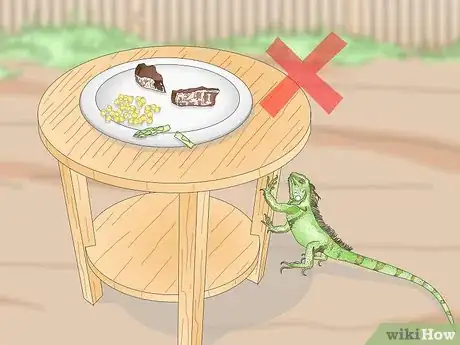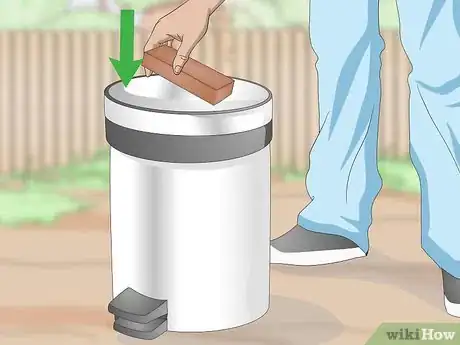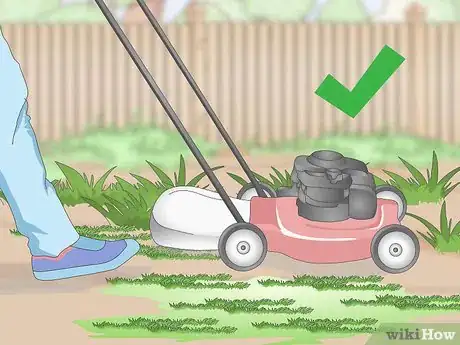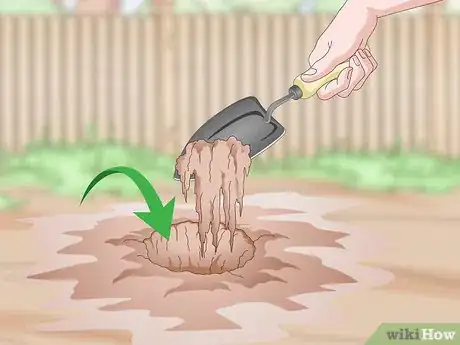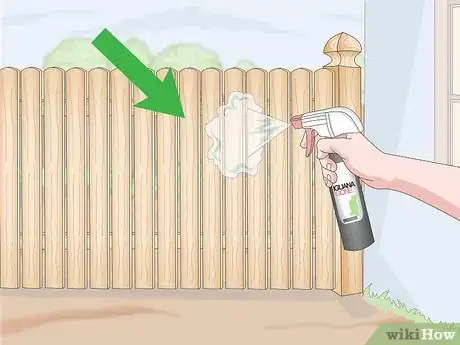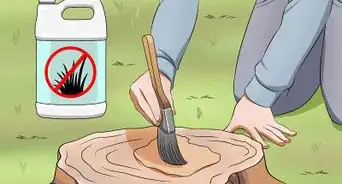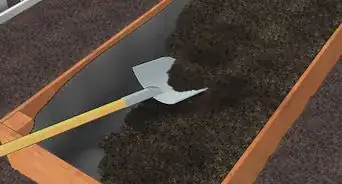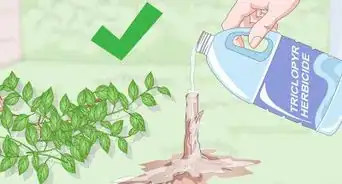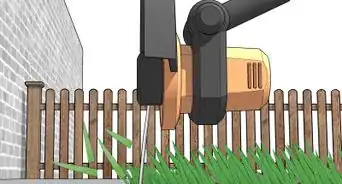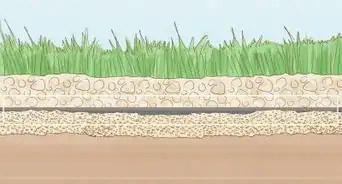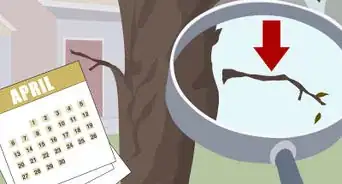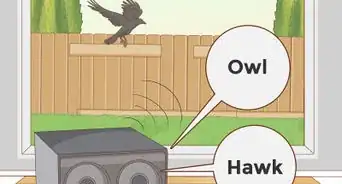X
This article was co-authored by wikiHow Staff. Our trained team of editors and researchers validate articles for accuracy and comprehensiveness. wikiHow's Content Management Team carefully monitors the work from our editorial staff to ensure that each article is backed by trusted research and meets our high quality standards.
This article has been viewed 41,457 times.
Learn more...
If you are having problems with iguanas burrowing in your yard, eating your vegetation and/or leaving waste in your pools or decks, fear not! Learning how to eliminate iguana food sources, make your yard inhospitable for iguana use and how to use repellent may help you find some peace of mind.
Things You Should Know
- Depending on where you live, the iguanas are probably protected by law—do not kill or harm them if you spot them near your home.
- You can make a garden less inviting by covering your pool, installing fencing, and removing vegetation that iguanas like to eat, but iguanas are stubborn and if they want to get in somewhere, they may dig or fight their way in.
- Humane, no-kill traps are the best way to deal with a persistent iguana—lure them in with fresh fruit and contact your local wildlife department when you catch one.
- If you spot an iguana lounging in your yard, scare it away by making some loud noises; if you do this over and over again, they’ll get the message and stop coming around.
- Iguanas will be attracted by leafy greens, fruit trees, and flower plants, and they’ll be scared off by wind chimes, large open spaces, and reflective yard decorations.
Steps
Part 1
Part 1 of 3:
Eliminating Sources of Food
-
1Protect plants using chicken wire or mesh. If iguanas are constantly on your property, it is likely because your yard is an ideal source of food or shelter. [1] Removing vegetation such as flowering plants and shrubs can help tame your iguana problem. Alternatively, protecting your plants using mesh and wiring can help guard them from being a source of food.
- Make sure to plant wire at least 1 foot underground so that the plants are protected from being accessed from underneath, as well. [2]
-
2Wrap trees in sheet metal to keep iguanas from climbing. Using sheet metal guards will make your fruit trees difficult for iguanas to find traction and climb. For the best results, start the metal approximately 18-36” from the ground. [3]
- Although iguanas love all types of foods, citrus fruit seem to be the exception. So if you have these types of trees, you can still protect them, but they will likely not be an iguana food source. [4]
Advertisement -
3Don’t leave your food unattended. Although herbivores, iguanas will try to eat just about anything. [5] So make sure not to leave food on your table or patio after meals. Also, pick up any food that may have fallen on the ground or in the yard either via trees, pets or children.
- Feed pets inside of the house instead of leaving their bowls outside as iguanas are happy to feast on your pet’s food, as well. [6]
-
4Secure trash lids properly or weigh them down. Iguana have also been known to get into your trash and scavenge for food, sometimes even by lifting or sliding your lid off entirely. [7] So make sure these are tightly secured so they are not used as a food source, either.
Advertisement
Part 2
Part 2 of 3:
Making Your Garden Inhospitable
-
1Keep your yard clean and maintained. If you yard contains dense thickets, overgrown grass and hedges, piles of lumber or overturned canoes, etc., these are very alluring places to seek shelter. Keeping your yard well maintained will provide fewer places for iguanas to hide.
-
2Fill in holes and gaps. Even if your yard is well maintained and free of debris, holes can still be used as a source of shelter. Iguanas can either burrow to make their own underground shelters or settle in existing holes and cracks on your property. [8] These are called nests. [9]
- Use cement or gravel and dirt to fill in these nests. Iguanas may be able to burrow through the dirt, but once they reach the rock, they won’t be able to pass.
- Be careful to make sure the holes are not occupied at the time of filing; however, as this may violate your state’s animal cruelty laws. [10]
-
3Make a loud noise when you see an iguana to quickly scare it away. Playing loud music or banging pots and pans together can scare them away temporarily, giving you time to continue working on making your yard inhospitable. [11]
- Additionally, purchasing wind chimes and placing them in your yard may do this trick for you without having you lift a finger. [12]
Advertisement
Part 3
Part 3 of 3:
Using Iguana Repellent
-
1
-
2Spray repellent in areas iguanas frequent most. However, be careful not to spray any directly on vegetation as some of the natural ingredients (such as red pepper flakes) can stunt plant growth. [15]
-
3Spray iguanas with water to rid them temporarily. Although not a repellent, per se, using your water hose to scare them away is also a temporary and natural solution to rid iguanas quickly.
Advertisement
Warnings
- Try not to touch iguanas or use heavy-duty gloves to protect your hands if you must. Coming into contact with wild animals can spread disease such as salmonella if they scratch you or if their feces comes into contact with an exposed area of your skin. [16]⧼thumbs_response⧽
- Don’t intentionally feed iguanas. Even if you do not mind the sight of them, your neighbors may and feeding them will increase their sightings and encourage their friends to come along as well.⧼thumbs_response⧽
Advertisement
References
- ↑ http://www.aaanimalcontrol.com/professional-trapper/howtogetridofiguanas.html
- ↑ http://www.sun-sentinel.com/news/florida/fl-sb-iguana-handling-issues-20180131-story.html
- ↑ https://medium.com/@PhilAutelitano/ten-tips-to-rid-your-yard-of-pesky-iguanas-3d65dbf0223
- ↑ http://www.iguanainvasion.com/faq.html
- ↑ https://medium.com/@PhilAutelitano/ten-tips-to-rid-your-yard-of-pesky-iguanas-3d65dbf0223
- ↑ https://medium.com/@PhilAutelitano/ten-tips-to-rid-your-yard-of-pesky-iguanas-3d65dbf0223
- ↑ https://medium.com/@PhilAutelitano/ten-tips-to-rid-your-yard-of-pesky-iguanas-3d65dbf0223
- ↑ https://medium.com/@PhilAutelitano/ten-tips-to-rid-your-yard-of-pesky-iguanas-3d65dbf0223
- ↑ http://www.iguanainvasion.com/faq.html
- ↑ https://medium.com/@PhilAutelitano/ten-tips-to-rid-your-yard-of-pesky-iguanas-3d65dbf0223
- ↑ http://www.sun-sentinel.com/news/florida/fl-pn-lake-ida-iguanas-20171004-story.html
- ↑ http://www.sun-sentinel.com/news/florida/fl-sb-iguana-handling-issues-20180131-story.html
- ↑ http://www.aaanimalcontrol.com/professional-trapper/howtogetridofiguanas.html
- ↑ http://www.iguanainvasion.com/faq.html
- ↑ http://www.iguanainvasion.com/faq.html
- ↑ http://www.iguanainvasion.com/faq.html
About This Article
Advertisement


